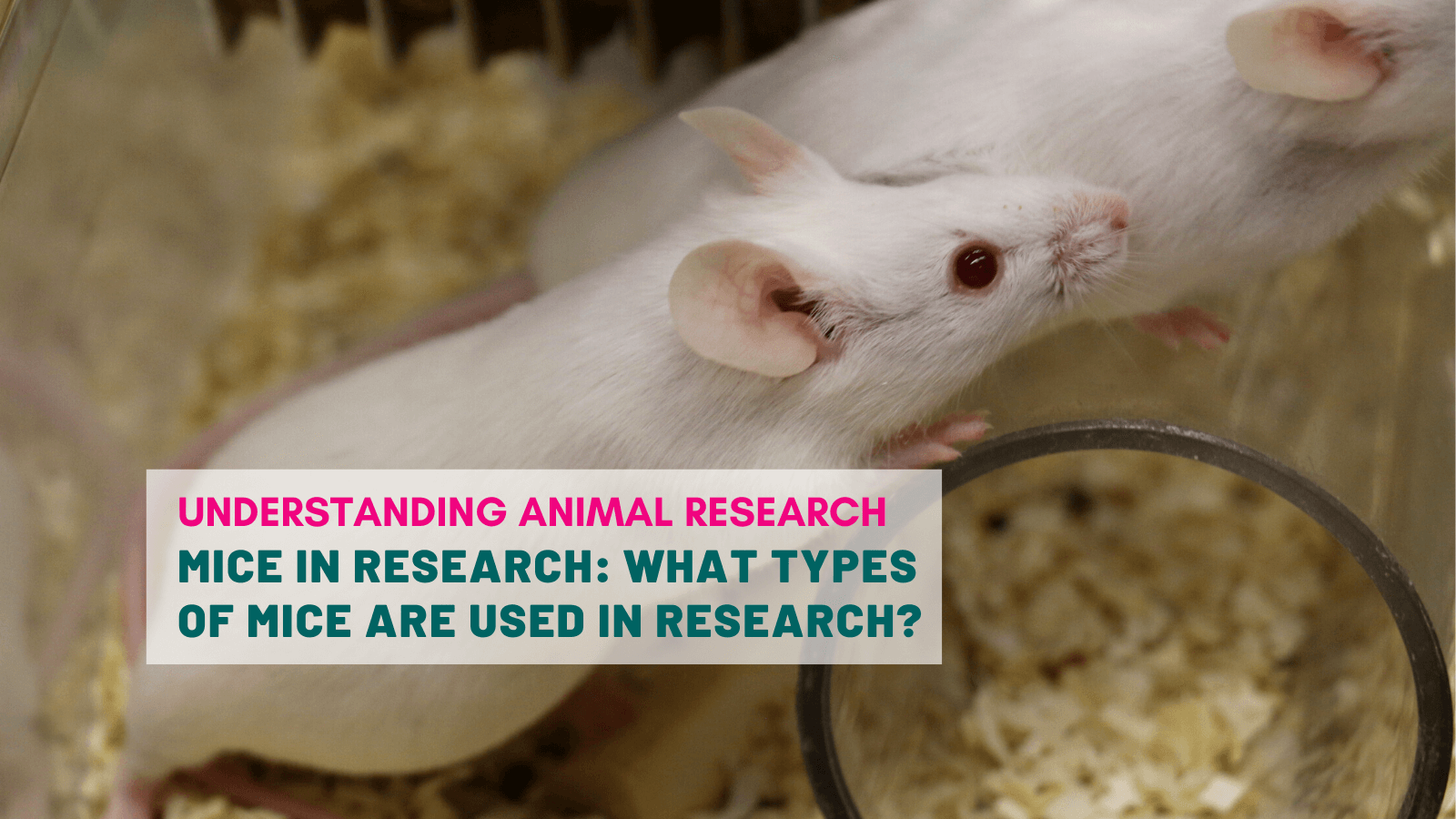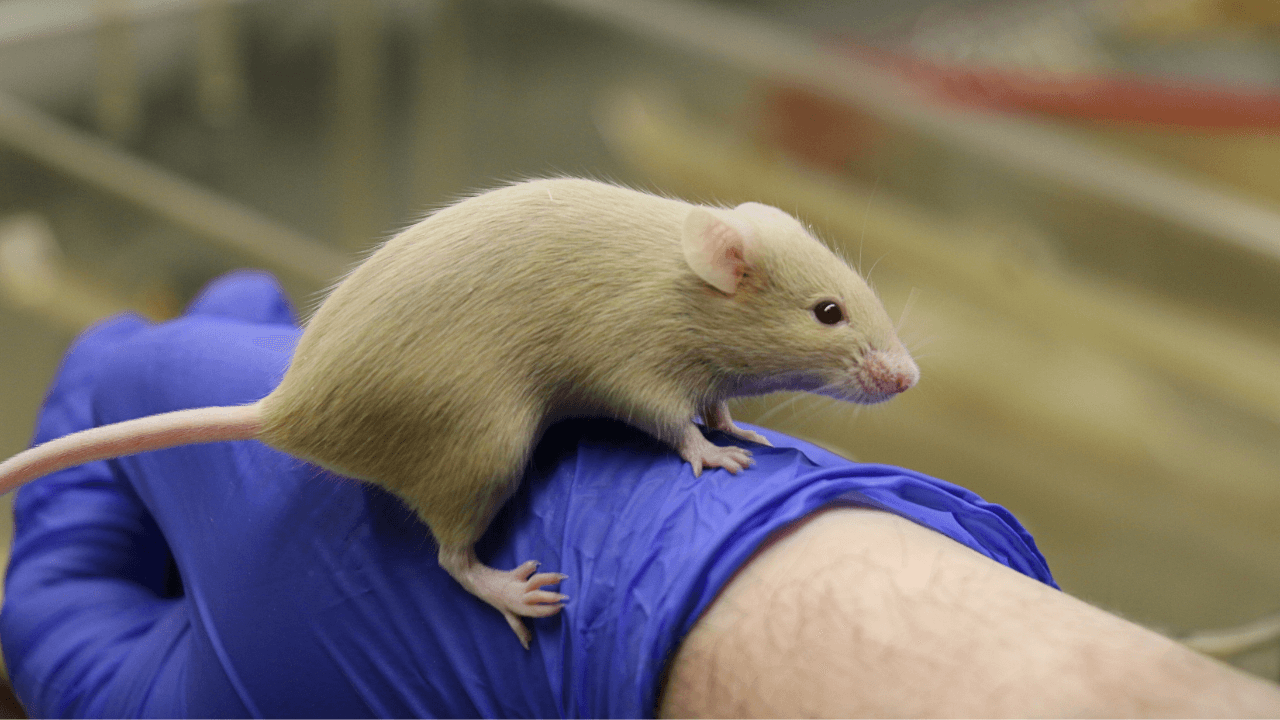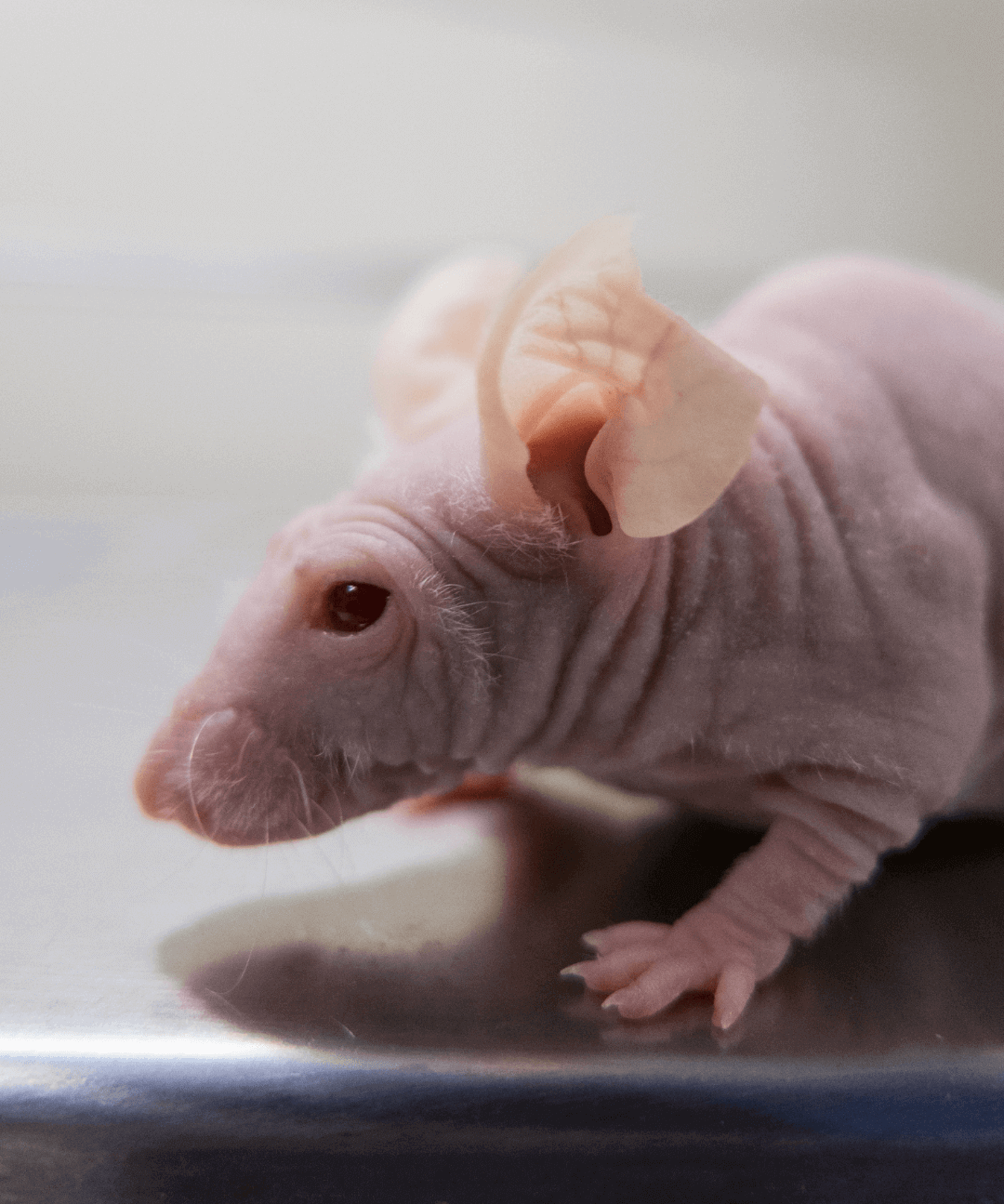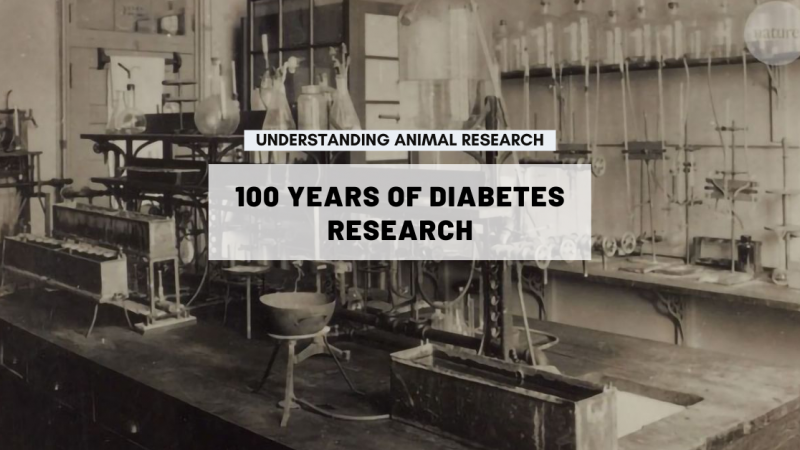
In this article we explore the history of the modern laboratory mouse, how they are used in scientific research, and take a look at some of the more unusual, but well known, types of mice that are used to model disease in medical research.
The history of the modern laboratory mouse
Modern laboratory mice, as we know them today, were born from over a century of careful breeding and selection for desirable traits in research. The ancestor of the modern mouse arose in the 1900s, on a farm in Illinois, where a woman named Abbie Lathrop imported mice from the Far East to Europe and North America and bred them. She was the first person to create an inbred mouse strain, quite different from its wild cousins.
Inbred strains of mice have been particularly useful to research. Produced through inbreeding and mating of brother/sister pairs over at least 20 generations, inbred mice are very similar. They have nearly identical DNA, with very little variation. This blank, stable, reliable canvas, is perfect for scientific experiments.
The differences observed between inbred mice is more likely to be a product of their environment than differences in individual mice. The fact that all mice within an inbred strain are genetically similar reduces experimental variability and increases study reproducibility, whilst also enabling transplants between mice without risk of rejection.
Over the years, researchers created thousands of different inbred but also outbred mouse strains, which have defined genetic backgrounds and unique characteristics such as coat colour, behaviour, metabolism, fertility, immune function, and other physiological traits. Natural mutations from inbred strains that are prone to obesity, cancer or defects in their immune system soon began to emerge, fuelling a deeper understanding of disease and biology.
Mapping the mouse genome
The real drive that led to the use of more and more mice in research was the understanding of their genetics, which inspired decades of research and knowledge. In 1915, John Burdon Sanderson Haldane's work began the genetic mapping of the mouse, which slowly developed over the following 50 years. Coupled with the game-changing transgenic technologies of the 1980s, the manipulation of a single gene of the mouse genome became routine.
Today this knowledge is used to modify the genome of mice to give them desirable traits for research. Mice can be engineered to develop Alzheimer’s symptoms, contract genetic disorders, have increased muscle strength, live longer, and even glow in the dark. Researchers have a plethora of choice when it comes to choosing the ideal mouse model they want to work with. The mouse genome is easily manipulated to create ever more precise models of specific diseases. Understanding how to select an appropriate strain is critical to any in vivo research project.
As a result of this diversity, studies in mice have contributed enormously to our understanding of human biology. Each strain has contributed one way or another, bit by bit, to fighting human disease. The laboratory mouse has remained the quintessential research animal of choice for studying human biology, pathology and disease processes and is still one of the most valuable tools for researchers across many different areas and disciplines. Research in mice has been an essential part of numerous medical discoveries, many of which have led to Nobel prizes.
But mouse models are not perfect. In the future, it is likely that animal modelling will move more and more towards models that mimic human conditions more precisely, using multiple animal models to ensure robustness of data and new genetic and metagenomic tools to develop and refine ‘humanised models’, such as transgenic animals expressing human genes or even entire human systems or organs.
In the meantime, the mouse remains by far the most common research animal in the world and one of the most well characterised. Dogs might well be man’s best friend, but Mus musculus is our greatest ally.
Different types of mice used in scientific research

Transgenic mice
Transgenic mice refers to "Mice that have had DNA from another source put into their DNA. The foreign DNA is put into the nucleus of a fertilized mouse egg. The new DNA becomes part of every cell and tissue of the mouse. These mice are used in the laboratory to study diseases." - The National Cancer Institute (USA)
Mutant mice
Genetic mutations are changes to your DNA sequence that happen during cell division when your cells make copies of themselves.
"Targeted mutant mice are produced by first inducing gene disruptions, replacements or duplications into embryonic stem (ES) cells via homologous recombination between the exogenous (targeting) DNA and the endogenous (target) gene." - The Jackson Laboratory
The obese mouse

The ob/ob or obese mouse is a mutant mouse that eats excessively and becomes profoundly obese. Mutations in the gene responsible for the production of leptin. Leptin is important in the control of appetite by signalling to the brain that the animal has had enough to eat. Since the ob/ob mouse cannot produce leptin, its food intake is not controlled by this mechanism.
The first ob/ob mouse arose by chance in a colony at the Jackson Laboratory in 1949. Mutant mice are phenotypically indistinguishable from their unaffected littermates at birth, but gain weight rapidly throughout their lives, reaching a weight three times that of unaffected mice. Used as an animal model of type II diabetes, ob/ob mice develop high blood sugar, despite an enlargement of the pancreatic islets and increased levels of insulin.
The Nude mouse
 Nude mice were first discovered in 1962. These mice possess a genetic mutation on the FOXN1 gene that causes a deteriorated or absent thymus. Because they lack a thymus, they cannot generate mature T lymphocytes and are unable to produce many types of adaptive immune responses.
Nude mice were first discovered in 1962. These mice possess a genetic mutation on the FOXN1 gene that causes a deteriorated or absent thymus. Because they lack a thymus, they cannot generate mature T lymphocytes and are unable to produce many types of adaptive immune responses.
In appearance, these mice lack body hair, which gives it the "nude" nickname. The nude mouse is valuable to research because it has a repressed immune system. Nude mice have served in the laboratory to gain insights into the immune system, leukemia, solid tumors, AIDS and other forms of immune deficiency, as well as leprosy. It can also receive many different types of tissue and tumour grafts because it is unable to produce the immune response required for tissue rejection, including allografts (grafts of tissue from other mice) and xenografts (grafts of tissue from another species). Xenografts are commonly used in research to test new methods of imaging and treating tumours.
Today, nude mice are less popular in research because researchers have found other genes or methods of repressing the immune system more efficiently (e.g. RAG1 and RAG2 knockout mice).
The cancerous mouse

Image: A cancerous mouse having a tumour measured in order to keep track of it's size and progression.
Researchers can target genes linked to cancer in humans to engineer and study mice that are prone to developing tumours. Mouse models of cancer enable researchers to learn about tumor biology in complicated and dynamic physiological systems. Since the development of gene targeting in mice, cancer biologists have been among the most frequent users of transgenic mouse models, which have dramatically increased knowledge about how cancers form and grow.
Prior to the development of genetic mouse models, researchers primarily studied cancer with cultured cells derived from human tumors. Although studies using cell cultured systems continue to provide valuable information and remain important to study cancer, they have their limitations. Cell cultures cannot be used to evaluate the physiological interactions among tumor cells or between tumor cells and their environment, which is why scientists must study a whole living body (in vivo) in order to develop effective treatments.
The fluorescent mouse
Left Image: Mice expressing the GFP gene. Right Image: A Thy-1 GFP-M mouse brain imaged by light-sheet microscopy
Researchers have created mice that can glow in the dark. Scientists can genetically alter mice to add the Green Fluorescent Protein (GFP) gene into their genome. This protein is derived from the jellyfish Aequorea victoria and is harmeless to the animals.
Researchers can decide to colour specific molecules and cells in the mice, which enables them to track the mice in space and time. This is often used for super-resolution imaging or organ transplant experiments to visualize targets by radiating UV or blue light. These tags have revolutionised cell biology by allowing nearly any protein to be imaged by light microscopy at submicrometer spatial resolution and subsecond time resolution in a live cell or organism.
Last edited: 13 June 2023 11:28





